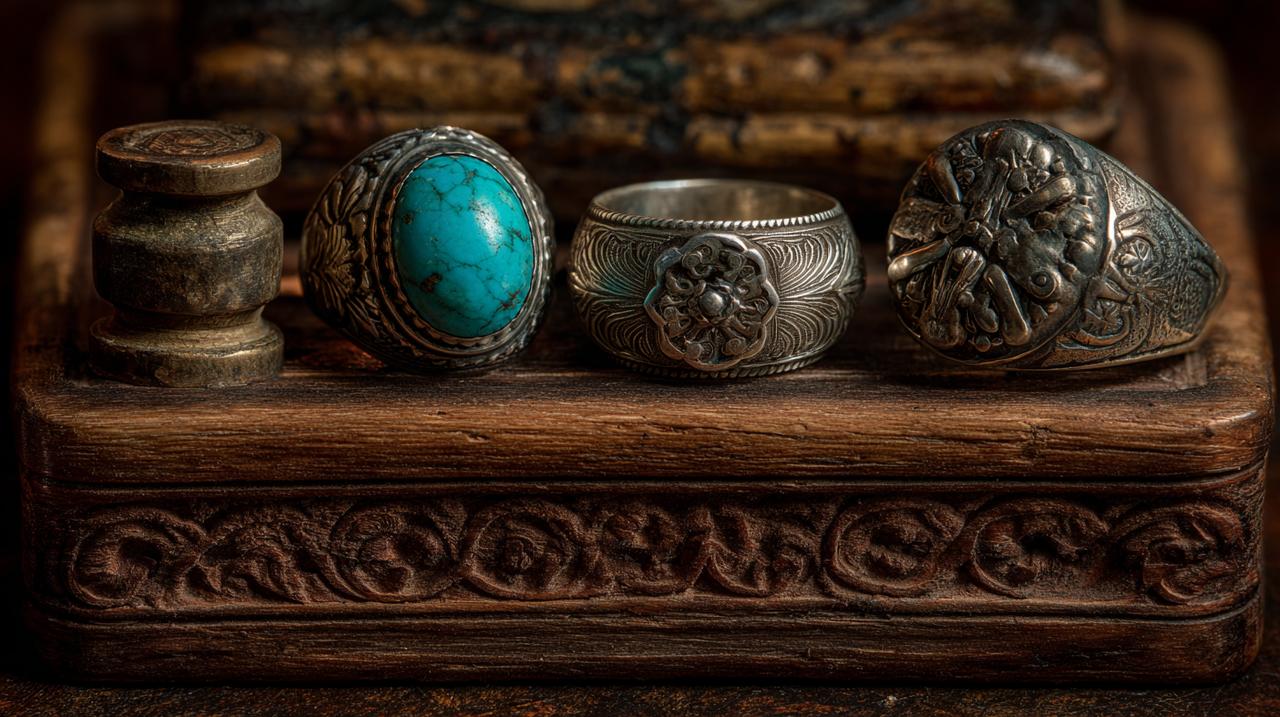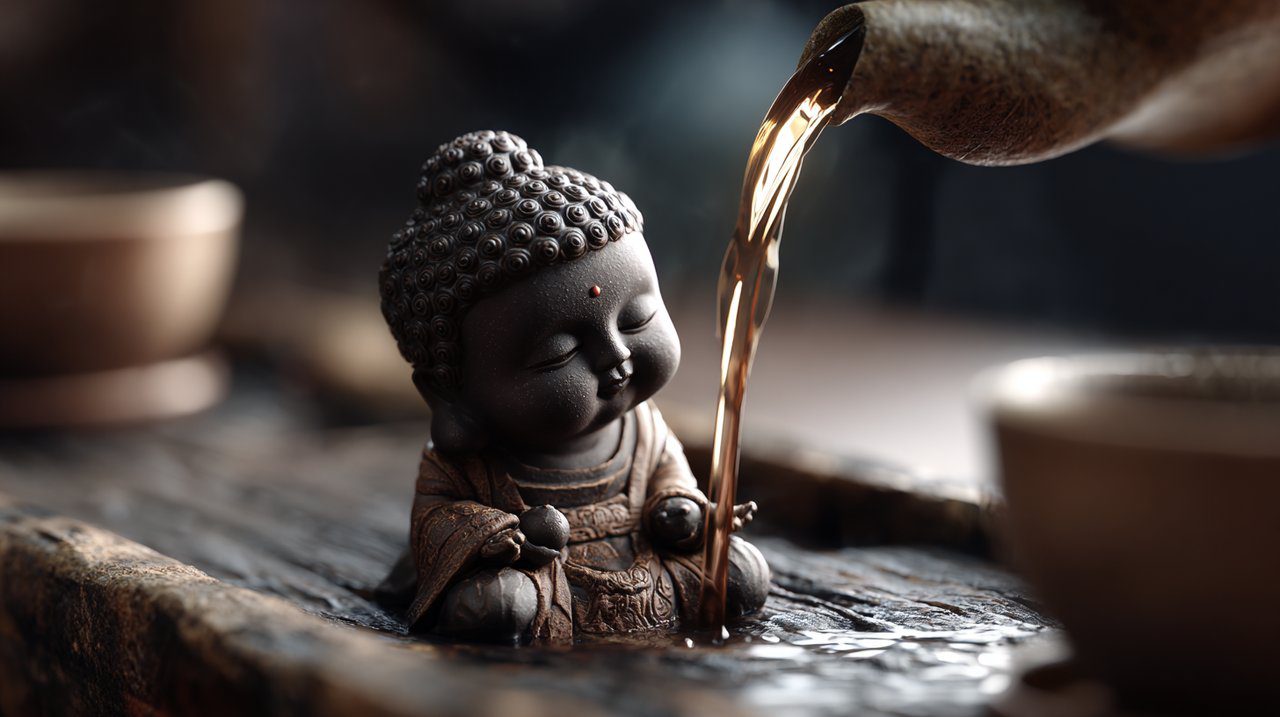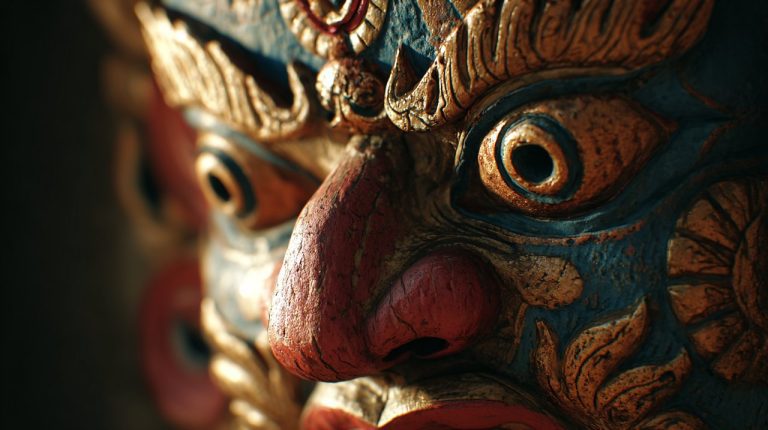Tea Pet Meaning: Symbolism, History, and the Art of Companionship
Beyond its unassuming form, how does a simple clay figurine ascend to become an indispensable presence in the intricate ballet of the tea ceremony? How does it seemingly embody a spiritual resonance capable of inviting fortune and elevating the very ‘qi’ of the tea itself? The true significance of the tea pet, or cháchǒng, extends far beyond mere decoration, offering a profound lens into the rich cultural and philosophical tapestry of Eastern tea traditions.

Tea Pet Meaning: Origins and Cultural Roots
These small ceramic figures, often crafted from unglazed clay like Yixing zisha (宜兴紫砂), are more than just accoutrements on the tea tray; they are integral companions in the tea ritual. Their quiet presence is deeply rooted in the historical evolution and spiritual ethos that define Chinese tea culture.
Historical Evolution: From Utility to Art
The lineage of tea pets likely traces back to ancient ritualistic practices where small figurines served as offerings to deities or ancestors. Over centuries, particularly as Yixing pottery flourished during the Ming and Qing dynasties, these figures gradually found their place within the tea ceremony. Initially, their function might have been purely practical—perhaps as a simple gauge for water temperature or a convenient vessel for leftover tea. Yet, with the passage of time, their role transcended such utility, transforming into cherished artistic expressions and silent, contemplative companions.
The tea pet, in its quiet dignity, mirrors the unhurried pace and thoughtful contemplation central to the tea ceremony.
Silent Companionship in Tea Culture
Within the serene choreography of tea brewing, the tea pet serves as a subtle yet powerful focal point for reflection and interaction. Unlike a human companion, it makes no demands, offering only a steadfast and unwavering presence. This unique form of silent companionship cultivates an environment of profound peace and introspection, allowing the tea practitioner to fully immerse themselves in the present moment. It stands as a tangible link to ancient traditions, a miniature world carefully placed within the expansive landscape of tea.
Symbolism and Significance: Beyond Mere Decoration
The profound meaning attributed to tea pets lies in their deeply layered symbolism. Each carefully sculpted form, from mythical creatures to human figures, carries specific cultural connotations, while the very act of nurturing the pet itself becomes a symbolic gesture of cultivation and connection.
Auspicious Meanings and Cultural Icons
Many tea pets are crafted to embody auspicious symbols, representing deeply held wishes for prosperity, longevity, happiness, or wisdom. The prevalence of certain figures speaks to their enduring cultural resonance. Common examples include:
- Three-legged toad (金蟾): Revered as a potent symbol of wealth and good fortune, it is frequently depicted with a coin nestled in its mouth, poised to attract abundance.
- Pixiu (貔貅): This mythical creature is believed to possess an extraordinary ability to attract and retain wealth. Its distinctive portrayal, often without an anus, symbolically reinforces its capacity to accumulate riches without dispersal.
- Buddha or Monk figures (小沙弥): These serene representations evoke qualities of peace, enlightenment, and spiritual tranquility, guiding the practitioner towards inner calm.
- Animals like elephants or pigs, which can also represent birth animal signs in some contexts: These figures typically symbolize strength, enduring good luck, or bountiful abundance, reflecting cultural values of prosperity and well-being.
The graceful Koi Fish, known for its perseverance and good fortune, also makes for a popular tea pet.
It is believed that these figures are not merely static representations; rather, they are thought to absorb the positive energy of the tea, thereby enhancing their inherent symbolic power over time.
The Concept of “Tea Qi” and Spiritual Connection
Perhaps the most profound dimension of the tea pet’s significance is its intimate connection to qi (气)—the vital life force or intrinsic energy that underpins traditional Chinese philosophy. As tea is meticulously poured over the pet, it is understood to absorb the very essence, or “tea qi,” from the brew. This continuous act of nourishment is believed to awaken the pet’s spiritual energy, transforming it into a conduit for good fortune and a tangible reflection of the tea practitioner’s own journey of self-cultivation. The developing patina on the pet, a direct result of this repeated interaction, is more than just an aesthetic enhancement; it signifies the gradual accumulation of this spiritual energy and the deepening, almost symbiotic, bond between the pet and its owner. It is a visible testament to time, care, and intention, much like the deepening character of a well-lived life or the mastery achieved through diligent practice.
Choosing Your Tea Companion: Material, Form, and Connection
The process of selecting a tea pet transcends mere aesthetic preference; it is a deeply personal endeavor, often reflecting an alignment of spirit and intention. Understanding the nuanced aspects of their creation can guide one towards a truly informed and resonant choice.
Materiality and Craftsmanship
Traditionally, the most prized tea pets are meticulously crafted from unglazed clay, particularly Yixing zisha (宜兴紫砂). This material is celebrated for its porous nature, which allows it to absorb the tea and gradually develop a magnificent, lustrous patina. While Yixing zisha remains the gold standard, other materials also find their place:
- Ruyao (汝窑): Distinguished by its exquisite, delicate crackle glaze, offering a distinct aesthetic.
- Jian ware (建盏): Often characterized by its rich, dark glazes and unique, often iridescent, patterns.
- Porcelain: Less common for traditional, absorbent tea pets due to its non-porous surface, though it is frequently used for purely decorative pieces.
The chosen material fundamentally influences how the tea pet will age and evolve, contributing to its unique character over decades.
Iconic Forms and Their Narratives
Beyond the widely recognized auspicious creatures, tea pets manifest in a myriad of forms, each designed to tell a story or embody a particular sentiment. Some practitioners are drawn to minimalist, abstract shapes that evoke a sense of tranquility, while others prefer intricate depictions of historical figures, mythological beasts, or even charming representations of everyday objects. When contemplating the ideal tea pet for one’s tea ceremonies, it is worthwhile to reflect on the narratives or qualities one wishes to invite into their dedicated tea space.
Cultivating a Personal Bond
The true essence of selecting a tea pet lies in the cultivation of a profound personal connection. It is often an intuitive process; one might find themselves inexplicably drawn to a particular figure, not solely for its inherent symbolic meaning, but for an elusive sense of resonance. This connection is paramount, as the chosen tea pet will become a silent witness to countless tea sessions, absorbing not just the tea itself, but also the practitioner’s moods, thoughts, and deepest intentions. Ultimately, it is about discovering a piece that genuinely speaks to one’s soul, transforming it into a tangible anchor for a richer, more contemplative tea journey.
Nurturing Your Tea Pet: The Ritual of Shared Growth
The Art of Patina: Tea as a Transformative Agent
The most visually striking aspect of nurturing a tea pet is the gradual development of its patina, known as bāojiāng (包浆). This rich, subtle sheen forms over time as tea is repeatedly poured over the unglazed clay, allowing the liquid to seep into its porous surface and leave behind a delicate luster. The more consistently the tea pet is nourished with tea, the more vibrant and deep its patina becomes, slowly transforming the figure over years into a unique, living piece of art. This process is a powerful testament to patience and consistent dedication, mirroring the cultivation of any profound skill or virtue.

Reflecting Inner Cultivation
Beyond the observable aesthetic transformation, the deliberate act of nurturing a tea pet can evolve into a meditative practice, serving as a profound reflection of the practitioner’s own journey of self-cultivation. Just as the tea pet meticulously absorbs the essence of the tea, becoming increasingly refined with the passage of time, the tea drinker too undergoes a subtle, internal transformation through the discipline and tranquility inherent in the tea ceremony. The pet thus serves as a tangible, quiet reminder of this internal growth, a steadfast companion on the path towards deeper appreciation and a more nuanced understanding of the symbolism and significance embedded within the world of tea.
So, we return to our initial inquiry: how does a humble clay figure ascend to such profound importance? The tea pet, in essence, is far more than a mere decorative item. It stands as a profound embodiment of cultural heritage, a vessel for spiritual aspiration, and a silent guide for personal growth. Through consistent care and dedicated interaction, it transforms from a simple clay form into a cherished vessel of shared experiences and accumulated wisdom. To embrace a tea pet is to invite a deeper layer of meaning and intentionality into one’s daily tea rituals, fostering a quiet, enduring dialogue between tradition, self, and the tranquil, ever-unfolding art of tea.
💡 Frequently Asked Questions
A tea pet, or cháchǒng, is a small ceramic figure, often crafted from unglazed clay like Yixing zisha, that serves as an integral companion in the Eastern tea ritual, embodying cultural and philosophical aspects.
Tea pets are significant because they provide silent companionship, serve as a focal point for reflection, embody auspicious symbols like wealth or peace, and are believed to absorb 'tea qi' (vital energy) from the tea, becoming a conduit for good fortune and reflecting the practitioner's self-cultivation.
Nurturing a tea pet by repeatedly pouring tea over it causes a rich, lustrous patina (bāojiāng) to develop on its unglazed surface over time. This process signifies the absorption of 'tea qi' and deepens the spiritual energy of the pet, transforming it into a unique, living piece of art and strengthening the bond with its owner.







